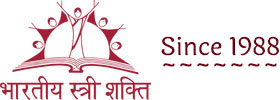Size does matter
Medha Nanivadekar
Times of India
August 2, 2011
(Excerpt)
The poorest MP-to-people ratio and a very low percentage of women in Parliament together pose a serious challenge to the legitimacy of Indian democracy. We can resolve both issues simply by linking them. Percentage of women in Parliament is a major indicator in the Millennium Development Goals, on which India has fared badly in spite of its one-third quotas for women in local government.
By converting all Lok Sabha and legislative assembly constituencies into dual-member constituencies, to elect one man and one woman, we can ensure equal gender representation at the state and national level. This would elevate India’s rank from 97th to number two, second only to Rwanda. It is easier to switch to dual-member constituencies without changing the geographical boundaries of existing constituencies. This honours the spirit underlying the constitutional embargo on increasing the constituencies before 2026 as well.
The win-win formula can do away with rotational reservation and establish women as equal partners in power at the highest level. Such a large number of women exercising equal power at the highest level would gradually change society’s perception about women and women’s perceptions of themselves. India can play a historic role by using democracy to transform patriarchy. Equal partnership of men and women in the public sphere would also transform hierarchical gender relations in the private sphere and reduce women’s vulnerability to gender-based violence and discrimination.
[Ref.: http://www.un.org/womenwatch/daw/egm/eql-men/docs/EP.8_rev.pdf]
